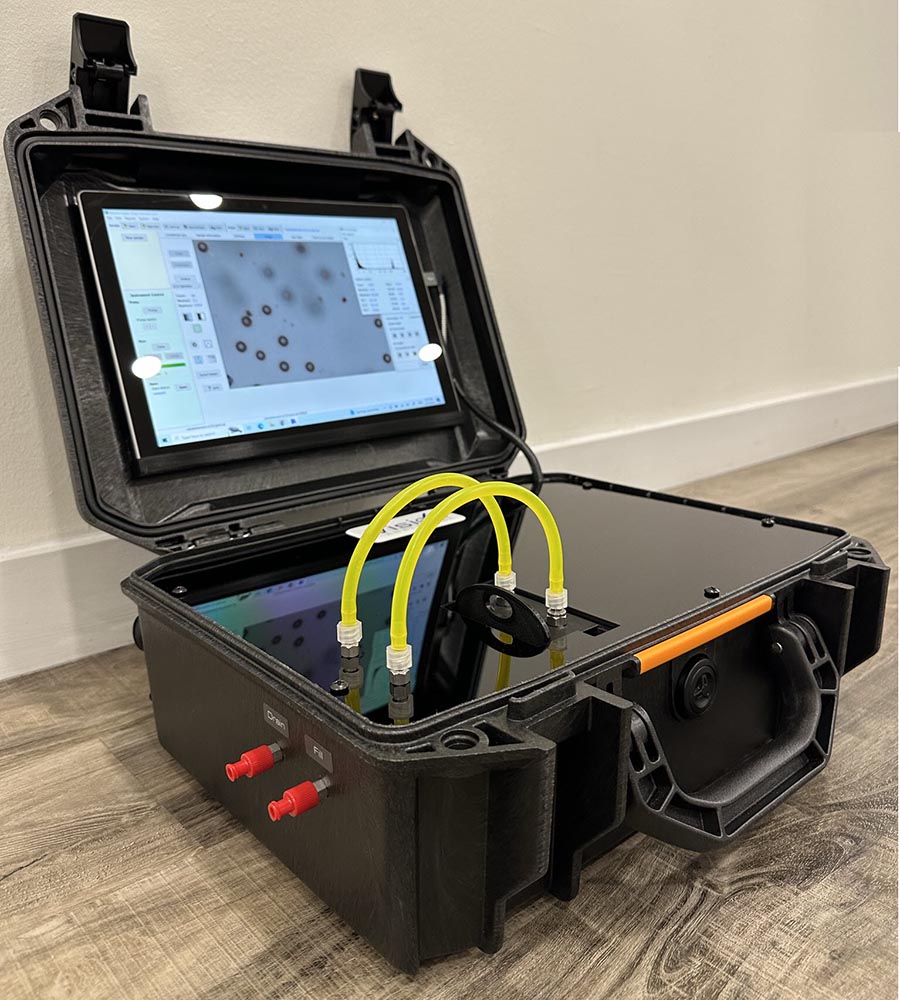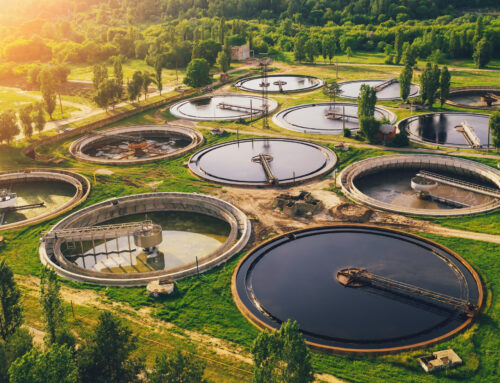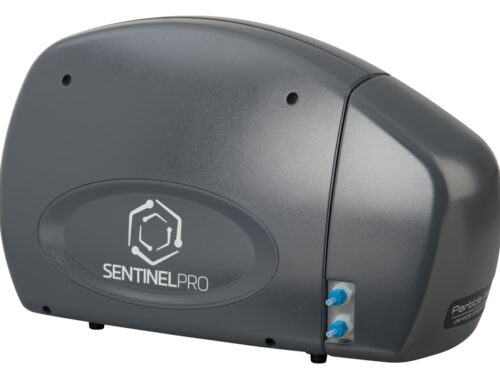Water-based drilling muds are a critical component in the drilling industry. They offer a balance of efficiency, cost-effectiveness, and environmental safety. The physical characteristics of these muds, such as particle size and shape, play a pivotal role in their performance. Image analysis can help decipher the properties of these muds.
Recent advancements in particle analysis, particularly through the Particle Insight Raptor Portable, have provided profound insights into the characteristics of water-based drilling muds. This blog delves into the significance of these findings and their implications for the drilling industry.
Methodology and Initial Findings
The Particle Insight Raptor Portable offers an innovative approach to analyzing drilling mud particles. In a recent analysis, a total of 5724 particles were measured in just 124 seconds. This demonstrates the efficiency of this technology. The size data was reported in both number and volume-weighted distributions, allowing for a comprehensive view of the fines and agglomerates present in the sample.
The water-based drilling mud, dispersed in water without additional sonication, revealed significant findings. Low circularity values and smoothness were observed. This is indicative of the potential for higher particle-to-particle friction and lower lubricity. These characteristics are crucial as they directly impact the drilling mud’s performance by reducing friction and wear on drilling equipment.
Implications of Particle Shape and Size
The irregular shape of particles, as evidenced by the sample thumbnails, has far-reaching implications. Irregularly shaped particles can lead to increased friction and reduced lubricity in the drilling mud. This can cause inefficiencies in drilling operations. Alongside this, it can increase wear and tear on equipment and potential complications in the drilling process.
Additionally, the size ranges of particles play a critical role. The presence of both fines and larger agglomerates affects the flow properties of the drilling mud.
Fines can contribute to the mud’s stability and help in sealing porous formations. However larger particles are crucial for maintaining the mud’s weight and controlling downhole pressures. So it is important to use particle size analysis to ensure you have the most appropriate particle size distribution.
Comparison with Malvern Mastersizer
A comparison of the Particle Insight Raptor Portable’s results with those obtained from the Malvern Mastersizer revealed similar data histograms. However, it must be noted that the size limit for the insight analysis was set to a lower limit of 10 micrometers. This differed to the Malvern data which focused on particles larger than 10 micrometers.
Ultimately, this distinction underscores the importance of considering the range of particle sizes when evaluating the performance of drilling muds.
Industrial Significance of Image Analysis
The image analysis of water-based drilling muds offers several benefits to the drilling industry:
- Optimization of Mud Formulations: By understanding the size and shape of particles, formulations can be optimized for better performance. This reduces the risk of equipment damage and operational delays.
- Enhanced Drilling Efficiency: Insights into the physical properties of drilling muds allows for adjustments that can enhance the efficiency of drilling operations. Through this there can be faster drilling times and reduced costs.
- Environmental Considerations: With a deeper understanding of drilling mud composition, it is possible to develop more environmentally friendly formulations without compromising on performance.
- Predictive Maintenance: Knowledge of particle characteristics can help in predicting and preventing equipment failure, leading to more proactive maintenance strategies.
An alternative particle size characterization technique to consider is laser diffraction. This is mainly used with smaller particles. Instead of measuring individual particles for their size, it focuses on how a group of particles disperse and the type of pattern it produces.
Uncover the Characteristics of Drilling Muds Through Image Analysis
The Particle Insight Raptor Portable has ushered in a new era of precision and efficiency in the analysis of drilling muds.
Image analysis can be utilized with a light scatter and provides detailed insights on the size, shape, and distribution of individual particles in water-based drilling muds. This technology empowers the drilling industry with data. With this data significant improvements can be made and quality control can be enhanced in drilling operations.
A comprehensive understanding of how these muds will perform in real-world drilling scenarios can be seen through:
- The low circularity of the particles
- The smoothness of the particles
- The detailed size distribution data.
As the industry continues to evolve, such technological advancements will play a pivotal role in enhancing operational efficiency, safety, and environmental sustainability.
Image analysis of drilling muds represents a significant step forward in the optimization of drilling operations. By harnessing the power of this technology, the drilling industry can achieve greater efficiencies. It can reduce environmental impacts and ensure the longevity of drilling equipment. As a result, it has chartered a path towards more sustainable and cost-effective drilling practices.







